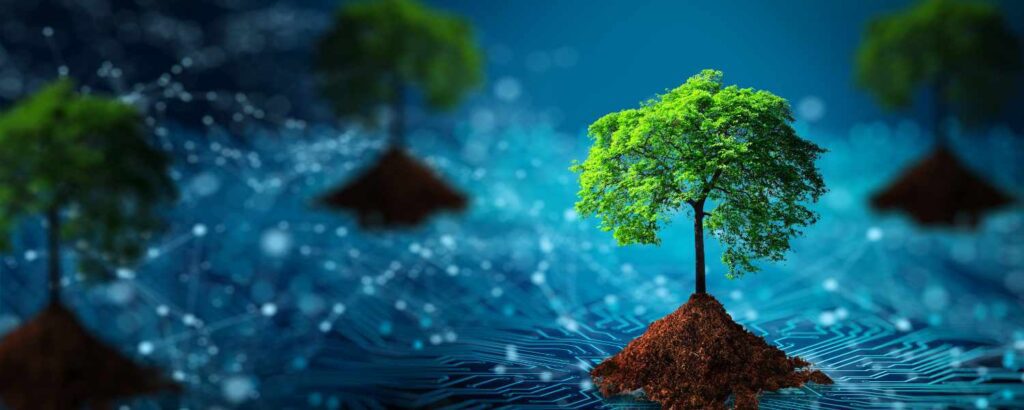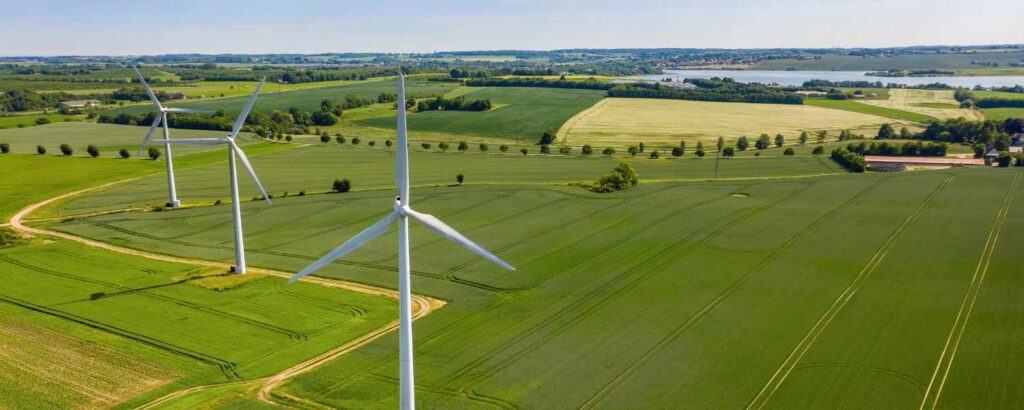In an era where environmental concerns are at the forefront of global discourse, the push towards sustainability has led to the emergence of green technology as a beacon of hope. Green technology, or eco-friendly technology, encompasses a wide range of innovations designed to mitigate human impacts on the environment.
This blog delves into the essence of green technology, its multifaceted benefits, various categories and examples, practical steps for adoption by individuals and businesses, and its overarching importance in environmental conservation.
What is Green Technology?

Green technology, also known as clean technology, applies environmentally friendly innovations and practices designed to conserve natural resources, reduce carbon footprints, and promote sustainable development. It’s not just a single technology but a suite of green technology solutions that address environmental challenges across different sectors, from energy production to waste management.
Benefits of Green Technology

Adopting green technology offers many benefits, underscoring its significance in driving environmental sustainability and fostering a healthier planet. Here are the expanded benefits, incorporating the specified keywords:
1. Reduced Environmental Pollution
Green technology innovations are pivotal in diminishing the levels of pollutants discharged into our environment. By harnessing eco-friendly technology in sectors like manufacturing, transportation, and energy production, we can significantly lower the emission of harmful substances, leading to cleaner air, water, and soil.
2. Enhanced Energy Efficiency
One of the hallmark benefits of green technology solutions is their substantial improvement in energy efficiency. These technologies, from LED lighting to high-efficiency heating and cooling systems, ensure energy is utilized more judiciously, reducing waste and lowering energy costs.
3. Conservation of Natural Resources
Green technology initiatives play a crucial role in the sustainable innovation and conservation of the world’s finite natural resources. Whether through water-saving appliances, sustainable agriculture practices, or renewable materials, these technologies help ensure that our natural resources are used responsibly and remain available for future generations.
4. Decrease in Greenhouse Gas Emissions
It holds a significant advantage in reducing greenhouse gas emissions, pivotal in combating global warming and climate change. Emphasizing renewable energy sources like wind and solar over fossil fuels, and enhancing energy efficiency across systems and devices, these solutions play a vital role in mitigating climate change’s impact.
Incorporating innovative and eco-friendly technology into our daily lives and business practices benefits the environment, the economy, and society. By embracing these solutions and initiatives, we can pave the way toward a more sustainable, equitable, and prosperous future for all.
Green Technology Categories and Examples

Green technology encompasses various types aimed at addressing environmental challenges:
1. Energy Generation Technologies
These focus on producing clean energy from renewable sources like solar, wind, and hydro, showcasing green technology innovation in reducing reliance on fossil fuels.
2. Energy Efficiency Technologies
Aimed at reducing energy consumption across different applications, these technologies enhance efficiency in industrial processes and household appliances, embodying eco-friendly technology solutions.
3. Pollution Control Technologies
Designed to mitigate environmental pollution, these technologies reduce or eliminate pollutants’ emissions, representing key green technology initiatives for a cleaner environment.
4. Sustainable Resource Technologies
These ensure responsible use and management of natural resources, including water, soil, and biodiversity, highlighting the significance of sustainable solutions in resource management.
Practical Steps for Individuals and Businesses

Both individuals and businesses can play a significant role in adopting and promoting green technology. Simple actions, such as incorporating energy-efficient appliances, supporting renewable energy sources, and adopting sustainable practices like recycling and carpooling, can significantly impact.
For businesses, investing in eco-friendly solutions, optimizing operations for energy efficiency, and committing to sustainable supply chain practices are vital steps towards environmental stewardship.
Types of Green Technology

Green technology, a cornerstone of modern environmental conservation efforts, can be segmented into distinct types, each targeting specific ecological challenges.
These categories underscore the diverse approaches encompassed within green technology innovations, offering eco-friendly solutions across various applications. Here’s a closer look at each type, enriched with the integration of the specified keywords.
1. Energy Generation Technologies
This segment focuses on harnessing energy from renewable and sustainable sources, marking a significant departure from traditional fossil fuel reliance. Innovations in solar, wind, hydro, and geothermal energy exemplify solutions that tap into the Earth’s inexhaustible natural resources to produce clean power.
These energy generation technologies embody the essence of green technology innovation and play a pivotal role in combating climate change by providing alternatives to carbon-intensive energy sources.
2. Energy Efficiency Technologies
Energy efficiency technologies represent a crucial area of green technology, focusing on minimizing energy consumption and optimizing performance across various sectors. From advanced insulation materials in buildings to high-efficiency lighting and HVAC systems, these technologies reduce the energy demand of industrial processes and everyday household appliances.
Adopting eco-friendly technology solutions is essential for creating sustainable environments, significantly lowering operational costs, and reducing the overall carbon footprint solutions.
3. Pollution Control Technologies
Addressing environmental pollution, this category of initiatives aims to capture, reduce, or eliminate pollutants released into the air, water, and soil. Carbon capture and storage (CCS), water filtration systems, and non-toxic material substitutes are key innovations in pollution control.
These solutions mitigate the adverse effects of pollution on ecosystems and human health and contribute to the broader goals of sustainable development and environmental protection.
4. Sustainable Resource Technologies
Sustainable resource technologies are focused on the responsible use and management of the planet’s natural resources to ensure their availability for future generations. This includes sustainable agriculture practices that preserve soil health and biodiversity, water conservation technologies that optimize usage and reduce waste, and sustainable forestry practices.
By implementing solutions in resource management, we can maintain the delicate balance of ecosystems, support biodiversity, and ensure the sustainable use of essential resources like water and soil.
Collectively, these technologies represent a comprehensive approach to addressing environmental challenges. Through continuous innovation and the widespread adoption of green technology initiatives, we can pave the way for a more sustainable, resilient, and eco-friendly future.
Integrating sustainable technology solutions across society is crucial, offering a key to combating climate change, preserving resources, and securing a healthier planet for future generations.
Why Green Technology is Important?

The importance of green technology lies in its potential to address some of our most pressing environmental issues, including climate change, resource depletion, and biodiversity loss.
Transitioning to sustainable technology solutions can help shrink our ecological impact, safeguard natural ecosystems, and secure a sustainable future for all on our planet.
Conclusion
Technology at the crossroads of progress and ecological care offers solutions to reduce our impact on Earth and foster economic growth. Amidst environmental challenges, advancing sustainable technology is crucial for the future.
VectorGlobe is at the forefront of this transformation, harnessing Industrial IoT to drive eco-efficiency in businesses. Our solutions optimize fuel usage, minimize waste, and curb emissions, exemplifying how technology can propel us towards a sustainable tomorrow. At VectorGlobe, we don’t just envision a greener future; we engineer it.

